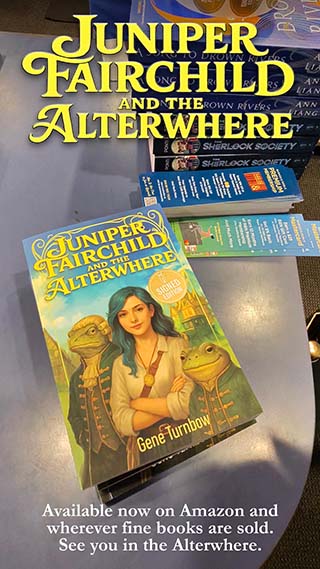Key Takeaways
- Lost in Space, a blend of drama and comedy, first aired on September 15, 1965, and was notable for being one of the first serious science fiction television series.
- The premise revolves around the Robinson family embarking on a mission to an Earth-like planet in response to overpopulation on Earth, with various adventures and challenges along the way.
- The show transitioned from a serious tone in its first season to a campier style in later seasons, with notable episodes featuring absurd scenarios and humorous elements.
- Lost in Space influenced CBS's decision not to pick up Star Trek, as they believed they already had a space show, leading to Star Trek being picked up by NBC instead.
- The legacy of Lost in Space includes various adaptations, spin-offs, and a lasting impact on science fiction in popular media, igniting the imaginations of millions.
Publicity photo for the 1965-1968 CBS television series Lost in Space (New York Times)
The space-travel television series Battlestar Galactica, Firefly, and Star Trek have all boldly gone where no one has gone before, but Lost in Space went first. The serious-turned-camp science fiction television series, which blends drama with comedy, first aired on September 15, 1965.
Premise
In the year 1997, planet Earth is overcrowded. So on October 16, 1997, a family is sent on a five-and-a-half-year mission. They board the Jupiter 2 to head to an Earth-like planet orbiting the star Alpha Centauri. The Robinson family is headed by father Professor John (Guy Williams) and mother Dr. Maureen (June Lockhart). It includes their offspring Judy (Marta Kristen), Penny (Angela Cartwright), and Will Robinson (Bill Mumy). They and Major Don West (Mark Goddard) are the only humans who plan to make the trip. But the human saboteur Dr. Zachary Smith plans to reprogram the ship’s Environmental Control Robot to thwart the mission, by having it destroy critical systems after the mission launches. Both plans go wrong….
The regulars also include the Robot (Bob May, voiced by Dick Tufeld) and Dr. Smith (Jonathan Harris), though technically Harris is repeatedly listed as a “special guest star.” The distinction was probably contractual, as he appeared in every episode in every season.
The family is planet-bound through much of the series, often encountering strange visitors from other planets, though they occasionally manage travel to other worlds for strange adventures elsewhere.
Before and After
The original pilot didn’t air. “No Place to Hide” was not broadcast until 1993, almost 30 years later. It features the Robinsons and West, but does not include Dr. Smith or the Robot. Whether the family series would have succeeded without those two is debatable, but castaway Robinsons go back long before that.
Lost in Space was the reason CBS didn’t buy Star Trek, which would debut the next year. “We already have a space show,” was the approximate response. Star Trek would be picked up by NBC in instead, and went on to make history.
We may never know if series creator and producer Irwin Allen was inspired by the science fiction comic-book series Space Family Robinson. (That matter was settled out of court.) The creator was inspired by the 1812 Johann David Wyss novel The Swiss Family Robinson, which in turn was likely inspired by Daniel Defoe’s 1719 novel Robinson Crusoe. Castaways named “Robinson” have been popular for a long, long time.
The entire first season of Lost In Space was presented as a serious attempt at a science fiction adventure series, and broadcast in black and white. It wasn’t until the second season that it changed to color broadcast, and with that change came a change in the tone of the show, moving from a noir approach to the terrors that space adventure might have to offer to the more family friendly, campy version we’re all familiar with today. One episode had Dr. Smith transformed into a giant talking stalk of celery. In another episode, the family is attacked by aliens who look like oversized, rolling fireballs. At one point, one of them is clearly wearing tennis shoes.
The campiness of the show became so pronounced that at one point Will Robinson and Doctor Smith were traveling in the Space Pod, and their environmental controls weren’t keeping up with the build-up of heat from atmospheric reentry.
So they decided to open a window.
Not only didn’t they immediately get blown out the open window due to the explosive decompression of the cabin, the ruse worked — the cabin temperature decreased, they closed the window again and were able to land safely.
Was oldest daughter Judy Robinson of Lost in Space inspired by oldest daughter Judy Jetson of the animated space age series The Jetsons? That remains a matter for debate. But both programs focus on the life of a family and feature a robot as a regular character.
Any similarity between Robby the Robot and the Environmental Control Robot B-9 is likely not coincidental. The robot of the 1950s films Forbidden Planet and The Invisible Boy, and the robot of the 1960s series Lost in Space, have connections. For one thing, Robby made two “guest appearances” on the 1960s series. For another, Robert Kinoshita, art director for Lost in Space, designed them both.
Later incarnations of Lost in Space include a 1973 animated film, a 1998 film, and a 2018 television series. There’s a 1967 novelisation and a 1991 comic book series. How much connection there is between the 1960s TV series and a number of later albums and songs of the same name is debatable. What’s not up for debate is that several regular cast members from the original series appear in spin-offs. There is also a definite musical connection. Johnny Williams composed both the original (seasons one and two) and the revised (season three) Lost in Space theme. Under the name John Williams, the same composer famously wrote for Star Wars.
Personal Connection
Lost in Space was one of my favourite programs as a child. Part of that was because it was the only program I got to regularly stay up half an hour past my bedtime to watch. Another part was because I wanted to be Will Robinson. And, a part I didn’t tell anyone at the time, I had a crush on the “older woman” Penny Robinson. (It took me a while as a child to figure out this. Being Will and having a crush on my sister Penny would not have been acceptable.)
Dr. Smith was a part of my life before I was born. The obstetrician who helped my mother leading up to and with my birth was named Dr. Smith. (Of course not the same doctor.) Later in high school, I participated in a multi-choir weekend event which meant riding through an area where much of the TV program was filmed. Then years later when I mentioned that trip to a friend I’ve acted and sung with, I learned of another connection. My friend had been good friends with Lynn Tufeld, daughter of the Robot’s voice actor Dick Tufeld.
And while I’ve written professionally for decades, I’m working on my first novel. A major part of it involves the utopian island chain called New Pelly. Any resemblance between the name PELLY and the names PEnnY and wiLL is purely not coincidental.
Lost in Space: A Legacy
The show, as silly as it was, still ignited the imaginations of milions of happy viewers and has become a fixture in the history of science fiction in popular media. What new dreams may come from this show that struggled so much with its identity and its agonizingly low budget? What new challenges might reimaginings of the show bring to us?
Danger, Will Robinson.
![]()
Alden Loveshade first thought of emself as a writer when in 3rd grade. E first wrote professionally when e was 16 years old, and later did professional photography and art/graphic design. Alden has professionally published news/sports/humorous/and feature articles, poems, columns, reviews, stories, scripts, books, and school lunch menus.
http://alden.loveshade.org













Thanks for the look back at Lost in Space. I particularly enjoyed the first season and the emphasis on the whole family having an adventure. The second and third seasons are fun when I’m in the mood for more campy fare.
I admit that as I watched the program as a young child I only occasionally got the humor. So I didn’t really notice the difference in the seasons (except for the theme music). I basically took the program seriously–except for Dr. Smith.
I had a very different perspective when I went back to watch the program as an adult.
The series probably got several children interested in science, even if the show did deviate from it.
There’s a word signifying castaway or adventurer that starts with “robin.” Don’t seem to recall what it is right now,
I honestly don’t recall if it helped me get into science or not. But I think it did help get me into science fiction.
If you recall that “robin-” word, feel free to post it–I’d be curious to know what it is.